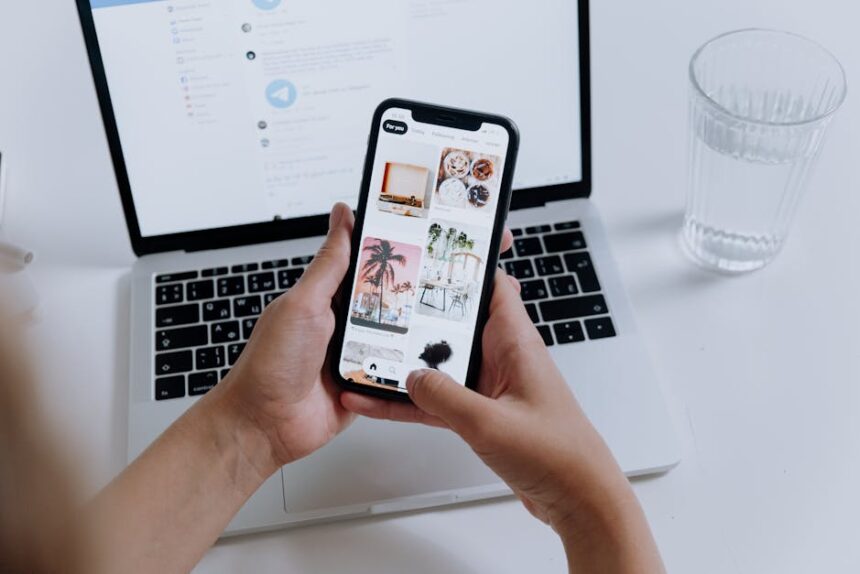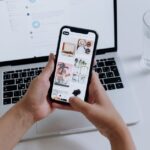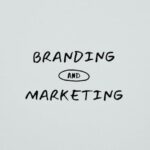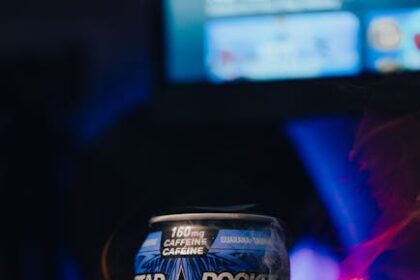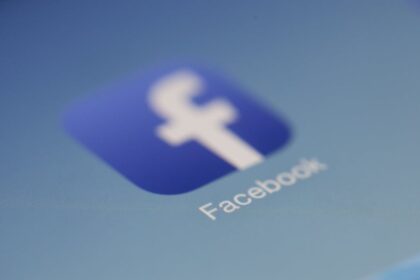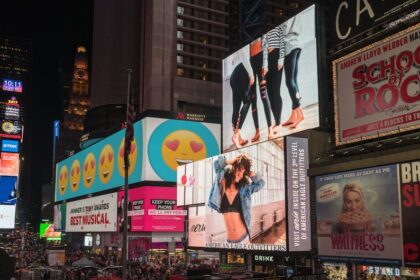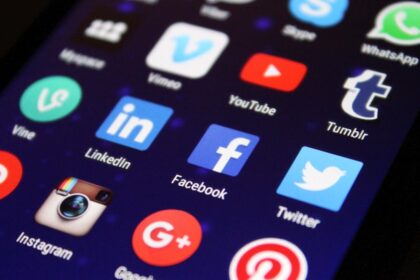The Foundational Pillars of a Facebook Ad Funnel
Effective Facebook advertising transcends merely “running ads”; it necessitates a meticulously constructed ad funnel, guiding potential customers through a structured journey from initial awareness to loyal advocacy. This funnel approach, fundamentally rooted in classic marketing principles like AIDA (Awareness, Interest, Desire, Action), is adapted and amplified by Facebook’s powerful targeting and tracking capabilities. Without a funnel, advertising efforts often resemble random shots in the dark, yielding inconsistent results and fragmented data. A strategic funnel ensures that every dollar spent is aligned with a specific stage of the customer journey, addressing distinct audience needs and leveraging appropriate ad formats and objectives for maximum impact. The overarching goal is to systematically qualify prospects, warm them up, convert them, and then nurture them into repeat buyers, thereby optimizing the entire customer lifetime value.
The bedrock of any successful Facebook ad funnel is the Facebook Pixel and, increasingly, the Conversions API. The Pixel is a snippet of code placed on your website that tracks user behavior, allowing you to measure ad effectiveness, build retargeting audiences, and optimize campaigns for specific actions. It logs standard events like PageView, ViewContent, AddToCart, InitiateCheckout, and Purchase, along with custom events that provide deeper insights into user interactions. The Conversions API (CAPI), on the other hand, is a server-to-server connection that sends website data directly to Facebook, bypassing browser-side tracking limitations imposed by privacy updates (like Apple’s iOS 14.5 ATT framework). CAPI provides a more reliable and comprehensive data stream, improving ad delivery, optimization, and measurement accuracy, especially for lower-funnel events. Implementing both the Pixel and CAPI, often in a redundant setup, is crucial for robust data collection and thus for the entire funnel’s performance. Without accurate event data, Facebook’s powerful machine learning algorithms cannot effectively optimize your campaigns, leading to wasted spend and missed opportunities.
Strategic alignment of campaign objectives to specific funnel stages is another critical pillar. Facebook offers a range of objectives – Brand Awareness, Reach, Traffic, Engagement, Video Views, Lead Generation, Messages, Conversions, Catalog Sales, Store Traffic – each designed to optimize for a particular outcome. Using a Brand Awareness objective for a cold audience campaign, for instance, tells Facebook to prioritize showing your ad to as many unique people as possible, or to people most likely to remember your brand. Conversely, a Conversions objective for a hot audience tells Facebook to find people most likely to complete a purchase. Mismatching objectives with funnel stages is a common pitfall; running a “Conversions – Purchase” campaign to a completely cold audience, for example, is likely to yield poor results because Facebook will try to find people ready to buy, when your cold audience is not yet prepared for that action. Understanding and leveraging Facebook’s objective-based optimization capabilities is paramount for efficient resource allocation and predictable funnel progression.
Finally, an iterative and measurement-driven mindset is fundamental. A Facebook ad funnel is not a static construct but a dynamic system that requires continuous monitoring, testing, and refinement. Performance metrics will fluctuate, audience behaviors will evolve, and ad fatigue will set in. Regular analysis of data, A/B testing of ad creatives, audiences, and offers, and swift adaptation to performance trends are non-negotiable. This iterative loop of “test, measure, learn, optimize” ensures that your funnel remains agile, cost-effective, and continually pushes prospects closer to becoming loyal customers. The overarching success hinges on the ability to understand where prospects are in their journey and serve them the most relevant message at the right time, thereby maximizing return on ad spend (ROAS) and bolstering customer lifetime value (CLTV).
Stage 1: Awareness (Cold Audience Acquisition)
The awareness stage is the top of the funnel, where the primary objective is to introduce your brand, product, or service to a completely new, cold audience. These individuals have likely never heard of your business, product, or possibly even the problem your solution addresses. The goal here is not immediate sales, but rather to capture attention, build initial brand recognition, and gather a warm audience for subsequent retargeting. This stage sets the foundation for all future conversions.
Campaign Objectives for Awareness:
- Reach: Maximizes the number of unique individuals who see your ad. Ideal for establishing widespread brand presence.
- Brand Awareness: Optimizes for people most likely to recall your ad after two days. Focuses on memorability.
- Traffic: Drives visits to a specific landing page (e.g., a blog post, a free resource, a general product category page). This is crucial for populating your Facebook Pixel with website visitors for retargeting.
- Video Views: If your awareness strategy involves compelling video content (e.g., brand story, explainer video), this objective optimizes for people likely to watch a significant portion of your video. This creates a highly engaged segment for retargeting.
Audience Targeting – Deep Dive for Cold Audiences:
Identifying and reaching the right cold audience is perhaps the most critical component of this stage. Effective targeting ensures that your initial impressions are not wasted on irrelevant individuals.
-
Core Audiences:
- Demographics: Basic filters like age, gender, location. While foundational, relying solely on demographics is rarely sufficient for precise targeting.
- Interests: This is where you target users based on their expressed interests, pages they like, groups they join, and activities on Facebook.
- Broad Interests: Starting with broad interests related to your industry (e.g., “Online Shopping,” “Fitness,” “Digital Marketing”) can provide a large initial pool.
- Niche Interests: As you gather data, or if you have a highly specific product, drilling down to niche interests (e.g., “Vegan Baking,” “Sustainable Fashion Brands,” “CrossFit Training”) can yield more relevant, albeit smaller, audiences.
- Interest Stacking & Layering: Instead of adding multiple interests as OR conditions (meaning anyone with any of those interests), use “Narrow Audience” to create AND conditions. For example, “People interested in ‘Sustainable Fashion’ AND ‘Ethical Consumerism’.” This refines the audience significantly.
- Exclusions: Crucially, exclude existing customers, recent website visitors, and other custom audiences that are already “warm” or “hot.” This prevents showing top-of-funnel ads to people already past that stage, saving budget.
- Behaviors: Facebook tracks various online and offline behaviors (e.g., purchase behavior, digital activities, travel patterns, mobile device usage). These can offer powerful insights into consumer intent and lifestyle. For example, targeting “Engaged Shoppers” can indicate a higher propensity to purchase.
-
Lookalike Audiences (LLAs):
- LLAs are the powerhouse for scaling cold audience acquisition. Once you have a valuable custom audience (e.g., website visitors, video viewers, email list, purchasers), Facebook’s algorithm can find new people who share similar demographic, interest, and behavioral characteristics.
- Seed Audiences: The quality of your LLA is directly tied to the quality of its seed audience. For awareness, common seeds include:
- Website Visitors (all visitors or specific high-value pages): Ideally, an audience of at least 1,000 unique visitors in the past 30-60 days.
- Facebook Page Engagers/Instagram Profile Engagers: People who have interacted with your content.
- Video Viewers: A highly engaged segment (e.g., 75% or 95% view completion).
- Email List (from opt-ins, not purchases yet): Provides a strong foundation of interested individuals.
- LLA Percentage: You typically start with a 1% LLA (most similar to your seed audience, smallest size) and then test 2-5% and 5-10% LLAs as you scale. The broader the percentage, the larger and less similar the audience will be to your original seed. For awareness, testing a broader LLA (e.g., 5%) might be appropriate if your product has mass appeal, or sticking to 1-2% for niche products.
Ad Creative – Cold Audience Focus:
The primary purpose of creative at this stage is to stop the scroll, grab attention, and provide value without being overtly salesy. It needs to introduce your brand/product in a compelling, relatable way.
-
Visuals:
- High-Quality & Captivating: Professional imagery or video is non-negotiable. Blurry or amateurish visuals will be scrolled past instantly.
- Relatability: Show real people, relatable situations, or aspirational outcomes.
- Problem-Solution Focused: Visually depict the problem your audience faces and hint at your solution.
- Brand Aesthetics: Ensure consistency with your overall brand identity.
- Video Content: Highly effective for cold audiences. Short, engaging videos (15-60 seconds) that tell a story, explain a concept, or showcase a unique value proposition. Animated videos, explainer videos, or even short brand films work well.
-
Copy:
- Hook: Start with a question, a bold statement, or a pain point that immediately resonates.
- Problem-Agitation-Solution (PAS) or AIDA (Awareness, Interest):
- Problem: Clearly articulate a common struggle your audience experiences.
- Agitation: Emphasize the negative consequences of that problem.
- Solution (initial): Briefly introduce your product/service as a potential answer, focusing on benefits, not just features.
- Value Proposition: Clearly state what makes you unique or better. What core benefit do you offer?
- Concise & Engaging: Keep the initial text short and impactful, with a compelling “See More” cut-off. Use emojis and line breaks to improve readability.
- Tone: Establish your brand’s voice – friendly, authoritative, inspiring, humorous, etc.
-
Call to Action (CTA):
- Soft CTAs: “Learn More,” “Watch More,” “Shop Now” (if leading to an informative product category page), “Download,” “Get Offer.” Avoid overly aggressive “Buy Now” for cold audiences.
- The goal is to move them to the next stage of the funnel, not directly to a purchase.
-
Ad Formats:
- Single Image/Video: Versatile and effective for concise messaging.
- Carousel Ads: Can tell a short story, showcase different aspects of a product, or highlight various benefits.
- Instant Experience (Canvas Ads): Immersive, full-screen mobile experiences that load quickly and allow for rich storytelling, combining videos, images, and interactive elements. Excellent for capturing attention and providing a mini-website experience within Facebook.
Placement Strategy:
For awareness, a broad placement strategy is generally recommended to maximize reach and gather data.
- Facebook Feeds: Desktop and Mobile News Feed.
- Instagram Feeds: Highly visual platform, great for brand building.
- Facebook and Instagram Stories: Vertical video and image formats are engaging and capture attention in full screen.
- Audience Network: Expands reach to third-party apps and websites. While often lower quality, it can provide additional impressions at a lower cost and expose your brand to more people.
- Messenger Inbox: Can be used for awareness, but less common for initial cold outreach.
Budget & Bidding:
- Lowest Cost (or “Automatic Bidding”): This is typically the best bidding strategy for awareness campaigns. It tells Facebook to get you the most results for your budget.
- Campaign Budget Optimization (CBO): Recommended if you have multiple ad sets within an awareness campaign (e.g., different cold audiences). CBO automatically allocates budget to the best-performing ad sets.
- Initial Budget: Start with a reasonable budget that allows Facebook to exit the “learning phase” (typically 50 optimizations within a 7-day period). This could be $20-$50 per ad set/campaign, depending on audience size and objective.
Landing Page/Destination for Cold Audiences:
The page users land on after clicking your ad is crucial for continuing the user journey.
- Value-Add Content: A blog post related to the pain point, an informative article, a guide, or a free downloadable resource (e.g., e-book, checklist).
- Product Category Page: If your ad highlights a product category, send them to that specific page, ensuring it’s rich in information and offers clear navigation.
- Educational Content: Pages that explain the “why” behind your solution, build trust, and showcase expertise.
- Avoid Hard Sells: Do not send cold traffic directly to a checkout page or a single product page with only “Buy Now” buttons. The goal is information and engagement, not immediate conversion.
Measurement for Awareness:
Key performance indicators (KPIs) at this stage are focused on reach, engagement, and initial cost efficiency.
- Reach & Impressions: How many unique people saw your ad and how many times was it seen?
- CPM (Cost Per Mille/Thousand Impressions): The cost to show your ad 1,000 times. Lower CPM indicates more efficient reach.
- Frequency: How many times, on average, a unique person saw your ad. High frequency on cold audiences can lead to ad fatigue.
- CTR (Click-Through Rate): Both Link CTR (clicks to your destination) and All CTR (any click on the ad). A healthy CTR indicates compelling creative.
- Video View Metrics: % viewed (25%, 50%, 75%, 95%), 3-second views, 10-second views.
- Engagement Rate: Reactions, comments, shares per impression.
- Unique Outbound Clicks: The number of unique people who clicked on your ad and left Facebook.
The success of the awareness stage isn’t measured in immediate sales, but in the volume and quality of the “warm” audience you build, ready for the next stage of the funnel. This initial interaction plants the seed, allowing you to cultivate interest and desire further down the line.
Stage 2: Consideration (Warm Audience Engagement & Nurturing)
Once you’ve captured the attention of a cold audience, the consideration stage is where you deepen their interest and move them further down the funnel. These are individuals who have shown some initial engagement with your brand or content – they’ve clicked on an ad, visited your website, watched a video, or engaged with your Facebook/Instagram page. The objective shifts from mere awareness to nurturing their interest, addressing potential objections, and building trust and desire.
Campaign Objectives for Consideration:
- Traffic: Continuing to drive traffic, but now to more product-specific or solution-oriented pages.
- Engagement: Fostering deeper interactions with your content, building community.
- Video Views: Encouraging more in-depth video consumption (e.g., product demos, testimonials).
- Lead Generation: If your business model involves capturing leads (e.g., email sign-ups, demo requests, consultation bookings) before a direct sale.
- Conversions (early funnel conversions): For e-commerce, this might include “Add to Cart” or “View Content” (of product pages) as conversion events, preparing for the final purchase.
- Messages: Encouraging direct communication through Messenger or Instagram Direct, allowing for personalized nurturing.
Audience Targeting – Retargeting Powerhouse for Warm Audiences:
This stage heavily relies on Custom Audiences, which are built from people who have already interacted with your business. This is where the Facebook Pixel and Conversions API truly shine, enabling highly targeted and relevant messaging.
-
Website Custom Audiences:
- All Website Visitors (past X days): General retargeting pool. Specify a timeframe (e.g., 30 days) to keep the audience fresh.
- Visitors by Time Spent: Target the top 25%, 10%, or 5% of visitors by time spent on your site. These are highly engaged individuals.
- Specific Page Viewers: Target people who visited specific product categories, blog posts, service pages, or landing pages but didn’t convert (e.g., viewed a product page but didn’t add to cart). This allows for highly relevant ad messaging.
- Pixel Events: People who triggered specific pixel events but didn’t complete a higher-value event:
ViewContent(product page viewers)AddToCart(abandoners – though often treated as hot audience for immediate conversion focus)InitiateCheckout(abandoners – also often hot audience)
- Exclusions: Always exclude individuals who have already converted (e.g.,
Purchaseevent in the last X days) to prevent showing them irrelevant ads and wasting budget. Also exclude people who are too warm (e.g., initiate checkout) if you have a separate, dedicated “hot” audience campaign.
-
Engagement Custom Audiences:
- Facebook Page Engagers: Anyone who visited your page or engaged with its posts/ads.
- Instagram Profile Engagers: Anyone who interacted with your Instagram profile or posts/ads.
- Video Viewers: Crucial for funneling cold video views. Target people who watched a significant percentage of your awareness-stage videos (e.g., 50%, 75%, 95% completion). These people have demonstrated high interest.
- Lead Form Openers/Completers: For those using Facebook Lead Ads. Target people who opened the form but didn’t submit, or those who submitted and are now leads.
-
Customer List Custom Audiences (Non-Purchasers):
- Upload email lists of people who opted into your newsletter or downloaded a free resource but haven’t made a purchase yet. This is a powerful way to nurture leads off-platform onto Facebook.
-
Layering & Refinement:
- Combine custom audiences with interest targeting (e.g., website visitors who are also interested in a specific complementary product) for more refined segments, though this is less common at this stage as custom audiences are powerful on their own.
- Create sequential retargeting: Show different ads to people based on their specific engagement level (e.g., Video Watchers get Ad A, Website Visitors get Ad B, Add-to-Cart abandoners get Ad C).
Ad Creative – Consideration Focus:
At this stage, your creative needs to build desire, address objections, provide social proof, and highlight specific benefits or features that resonate with their initial interest.
-
Visuals:
- Product/Service in Use: Show the solution in action, demonstrating its benefits and ease of use.
- Testimonials/Reviews: Visuals incorporating customer quotes, star ratings, or user-generated content (UGC).
- Before & After: If applicable, visually demonstrate the transformation or improvement your product offers.
- Benefit-Driven Imagery: Instead of just a product shot, show the result of using the product.
- Video Content:
- Product Demos/Walkthroughs: How-to videos, showcasing features.
- Customer Testimonials: Real people sharing their positive experiences.
- Explainer Videos: Deeper dive into your solution.
- FAQ Videos: Addressing common questions and objections.
-
Copy:
- Address Objections: Proactively answer common questions or concerns (e.g., “Is it durable?”, “How does it compare?”).
- Specific Benefits & Features: Go beyond the general benefits presented in awareness, detailing what makes your product superior or uniquely suited to their needs.
- Social Proof: Weave in testimonials, statistics, awards, or media mentions. “Join X thousands of satisfied customers!”
- Storytelling (deeper): Expand on the brand story or customer success stories.
- Call to Action (CTA): More direct, but still nurturing. “Shop Now,” “Learn More,” “Get a Quote,” “Download Guide,” “Sign Up,” “Request a Demo.”
- Introduce Scarcity/Urgency (Soft): “Limited stock,” “Offer ends soon” (if applicable), to encourage progression without being overly aggressive.
-
Ad Formats:
- Carousel Ads: Excellent for showcasing multiple products, different features of one product, or a step-by-step process.
- Collection Ads: Combines a hero video/image with smaller product images below, allowing users to browse products seamlessly within the ad. Great for e-commerce.
- Single Image/Video: Still highly effective for direct messaging or demonstrating a single powerful benefit.
- Instant Experience: Continues to be powerful for providing a rich, immersive dive into your offerings.
Placement Strategy:
While still broad, you might start to refine placements based on where your warm audience engages most effectively.
- Facebook & Instagram Feeds: High-visibility placements where users are actively scrolling.
- Facebook & Instagram Stories: Engaging full-screen format, excellent for video testimonials or quick tips.
- Messenger Inbox: For messages objectives, or if you want to open a direct dialogue.
- Audience Network: Use cautiously. While it can provide scale, monitor performance closely as it often yields lower quality traffic or conversions at this stage compared to on-platform placements. Exclude if performance is subpar.
Budget & Bidding:
- Lowest Cost: Still a common default. Facebook optimizes to get the most results for your budget.
- Bid Cap/Cost Cap: If you have specific CPA targets for leads or “Add to Cart” events and want more control, you can experiment with these, but they require careful monitoring.
- Value Optimization (for Conversion Objective): If you’re optimizing for
AddToCartor similar events and want to prioritize higher-value actions, Facebook can optimize for those likely to lead to a higher average order value later. - Budget Allocation: Dedicate a significant portion of your budget to this stage. It’s often the most critical for moving prospects from passive interest to active consideration.
Landing Page/Destination for Warm Audiences:
The goal is to provide more detailed information and guide them towards a micro-conversion or further exploration.
- Specific Product Pages: Detailed descriptions, multiple images, reviews, FAQs.
- Service Pages: Comprehensive explanation of your offerings, case studies.
- Lead Capture Forms: Dedicated landing pages for e-book downloads, webinar registrations, or free trials.
- Comparison Pages: If your ad addresses competitor concerns, lead them to a page comparing your solution.
- FAQ Pages: Address common questions directly before they become roadblocks.
- Trust-Building Pages: “About Us,” “Our Story,” “Testimonials” pages.
Measurement for Consideration:
KPIs here focus on engagement quality, lead generation, and initial conversion metrics.
- CTR (Link): Continue to monitor the relevance of your ads.
- Landing Page Views: Ensuring users are actually reaching your intended destination.
- Cost Per Landing Page View: Efficiency of traffic generation.
- Engagement Metrics: Comments, shares, reactions – indicating resonance.
- Leads: Number of leads generated, Cost Per Lead (CPL).
- Add to Carts (for e-commerce): Number of times products were added to a cart, Cost Per Add to Cart.
- Messages Started: For campaigns optimizing for direct communication.
- Time on Site, Pages Per Session: Deeper engagement metrics (if tracked via Google Analytics or similar).
- Bounce Rate: Indicates if the landing page is relevant to the ad.
The consideration stage is a crucial bridge. It’s where you solidify interest, build rapport, and equip prospects with the information they need to confidently move towards a purchase decision, making it a pivotal part of the overall Facebook ad funnel.
Stage 3: Conversion (Hot Audience Monetization)
The conversion stage is where the magic happens – turning highly qualified, hot prospects into paying customers. At this point, the audience has demonstrated clear intent, having viewed specific products, added items to their cart, or initiated the checkout process. This segment of your funnel requires laser-focused targeting, compelling offers, and an undeniable call to action. The goal is to remove any final barriers and secure the sale.
Campaign Objectives for Conversion:
- Conversions (specifically “Purchase” or “Complete Registration”): This is the paramount objective for this stage, telling Facebook to find people most likely to complete your desired high-value action.
- Catalog Sales (Dynamic Product Ads – DPA): Critically important for e-commerce. This objective dynamically shows users products they’ve viewed, added to cart, or even similar items, leveraging your product catalog.
- Lead Generation (if the “conversion” is a high-intent lead): For B2B or high-ticket services where a sale is preceded by a qualified lead (e.g., “Request a Demo,” “Get a Quote,” “Start Free Trial”).
Audience Targeting – Laser Focus for Hot Audiences:
This stage almost exclusively relies on highly segmented Custom Audiences, focusing on explicit intent signals.
-
Website Custom Audiences (High Intent):
- Add To Cart (past X days, excluding purchases): People who added items to their cart but didn’t complete the purchase. This is a prime segment for immediate retargeting. Use a shorter window (e.g., 3-7 days) to capitalize on recency.
- Initiate Checkout (past X days, excluding purchases): Even higher intent. These users were literally at the checkout page. Target them with urgency and specific incentives. Use a very short window (e.g., 1-3 days).
- ViewContent (specific product pages, highly engaged): People who viewed specific product pages multiple times, or spent significant time on them, indicating strong interest.
- Exclusions: Absolutely exclude anyone who has completed a
Purchaseevent in the defined lookback window (e.g., 7-30 days, depending on your product’s repurchase cycle). This ensures you’re not spending money on already converted customers for direct purchase ads. Also exclude lower-intent custom audiences from the consideration stage to avoid diluted messaging.
-
Customer List Custom Audiences (Non-Purchasers, Specific Segments):
- If you have a segmented email list of people who have been highly engaged (e.g., opened specific sales emails, clicked on product links), you can upload this for retargeting.
-
Dynamic Product Ads (DPA) – The Gold Standard for E-commerce:
- DPA campaigns are powered by your product catalog and the Facebook Pixel. They automatically show users relevant products based on their past interactions on your website or app.
- Retargeting specific events:
Viewed Content but not Purchased: Show them the exact products they viewed.Added to Cart but not Purchased: Show them the exact products in their abandoned cart, often with an incentive.Upsell/Cross-sell: Show complementary products to recent purchasers (though this can also fit in the Retention stage).
- DPA audience segments are automatically created by Facebook based on your catalog and pixel data, making setup highly efficient for e-commerce.
Ad Creative – Conversion Focus:
The creative here needs to be direct, compelling, and often urgency-driven. It’s about overcoming final hesitations and pushing for the purchase.
-
Visuals:
- Product Clarity: Showcase the product clearly, often in a clean, professional shot.
- Lifestyle Imagery: Show people enjoying the benefits of the product.
- Urgency Visuals: If offering a discount or limited stock, incorporate elements that convey this (e.g., countdown timers, “Limited Stock” badges, expiring offer graphics).
- Social Proof Visuals: Images featuring customer reviews, star ratings, or trust badges.
- Dynamic Product Ads: Visually stunning product images pulled directly from your catalog.
-
Copy:
- Strong Call to Action: “Shop Now,” “Buy Now,” “Get Offer,” “Complete Your Purchase,” “Claim Your Discount.”
- Specific Offer Details: Clearly state discounts, free shipping, bundle deals, or other incentives. “Get 15% off your entire order!”
- Urgency & Scarcity: “Limited time offer,” “Only X left in stock,” “Sale ends tonight.” Use judiciously and ethically.
- Overcome Final Objections: Reiterate guarantees (money-back, satisfaction), easy returns, customer support availability.
- Value Proposition Reiteration: Briefly remind them of the core benefit they’ll gain.
- Social Proof: Highlight glowing testimonials or trust signals (e.g., “Rated 5 Stars by thousands!”).
-
Ad Formats:
- Dynamic Product Ads (DPA): The most effective for e-commerce conversion retargeting. They personalize the ad content for each user.
- Single Image/Video: For specific, time-sensitive offers or highly targeted messages (e.g., “Don’t forget your cart!”).
- Carousel Ads: Can be used to showcase products from an abandoned cart or offer a curated selection of best-sellers.
Placement Strategy:
For conversion campaigns, focus on placements where users are most likely to convert with minimal distractions.
- Facebook Feeds (Desktop & Mobile): Prime real estate for direct response.
- Instagram Feeds: Highly effective, especially for visually appealing products.
- Facebook & Instagram Stories: Can be very effective, particularly with DPA formats, as they offer a full-screen, immersive experience.
- Avoid Audience Network: Generally, for critical conversion campaigns, it’s best to exclude Audience Network unless it has consistently proven to deliver profitable conversions for your specific business. Its lower quality traffic can skew results.
Budget & Bidding:
- Conversions Objective with Lowest Cost: Facebook will optimize to get you the most purchases for your budget. This is typically the starting point.
- Bid Cap/Cost Cap: If you have a strict target Cost Per Acquisition (CPA) and want more control, these can be used. However, they can limit delivery if the cap is too low.
- Value Optimization: For e-commerce, this bidding strategy tells Facebook to optimize for purchases that generate higher revenue, not just more purchases, thereby maximizing ROAS. This is especially powerful if your product catalog has varying price points.
- Budget Allocation: This stage often commands a significant portion of the budget (e.g., 20-40% or more, depending on your funnel structure and AOV) because it directly generates revenue.
Landing Page/Destination for Hot Audiences:
The landing page must be optimized for frictionless conversion.
- Product Page: If retargeting viewers, ensure the product page clearly highlights the offer, includes trust signals, and has a prominent “Add to Cart” or “Buy Now” button.
- Checkout Page: For cart abandoners, if possible, deep link directly to a pre-populated cart or the first step of the checkout process.
- Dedicated Offer Page: A specialized landing page showcasing the specific offer from the ad (e.g., a flash sale page).
- Review of Key Information: Ensure shipping details, return policy, and payment options are clearly visible and reassuring.
Measurement for Conversion:
The KPIs at this stage are directly tied to revenue and profitability.
- Purchases: The number of completed sales.
- Revenue: Total sales generated.
- ROAS (Return On Ad Spend): Total revenue / ad spend. The ultimate metric for profitability.
- CPA (Cost Per Acquisition/Purchase): Total ad spend / number of purchases.
- Conversion Rate: Purchases / Landing Page Views (or Initiate Checkouts).
- Average Order Value (AOV): Total revenue / number of purchases.
- Frequency: Monitor closely. While a slightly higher frequency is acceptable for hot audiences, excessive frequency can lead to ad fatigue and decreased performance.
Successfully converting hot audiences is the culmination of your funnel efforts, directly impacting your bottom line. By providing highly relevant and urgent messaging to individuals on the cusp of purchasing, you maximize your chances of driving profitable sales.
Stage 4: Retention & Advocacy (Customer Loyalty & Lifetime Value)
The customer journey doesn’t end with a purchase; in fact, this is where true long-term value creation begins. The retention and advocacy stage focuses on nurturing existing customers, encouraging repeat purchases, increasing their lifetime value (CLTV), and transforming them into brand advocates. Acquiring a new customer is significantly more expensive than retaining an existing one, making this stage crucial for sustainable business growth and profitability.
Campaign Objectives for Retention & Advocacy:
- Conversions (Repeat Purchases): Optimizing for subsequent purchases of existing customers (e.g., cross-selling complementary products, upselling premium versions).
- Catalog Sales (Dynamic Product Ads – DPA for cross-sell/upsell): Leveraging DPA to show existing customers products they haven’t purchased yet or complementary items based on their purchase history.
- Engagement: Fostering community, encouraging reviews and user-generated content, or promoting loyalty programs.
- Messages: Providing customer support, sharing exclusive offers, or collecting feedback via Messenger.
- Lead Generation (for loyalty programs or referrals): Encouraging customers to join a loyalty program or refer friends.
Audience Targeting – Customer Loyalty & Growth:
This stage exclusively targets your existing customer base, segmented by their purchase history and engagement.
-
Custom Audiences from Customer Lists:
- All Purchasers: Upload your entire customer list (email addresses, phone numbers) to create a custom audience.
- Segmented Purchasers:
- By Product Purchased: Target customers who bought Product A with ads for Product B (complementary).
- By Purchase Value (LTV): Identify high-value customers for exclusive offers or loyalty programs.
- By Recency (RFM – Recency, Frequency, Monetary value):
- Recent Purchasers (e.g., 0-30 days): For thank-you messages, initial upsell/cross-sell, or review requests. Exclude for new customer acquisition ads.
- Dormant Purchasers (e.g., 90-180 days no purchase): For win-back campaigns with re-engagement offers.
- Loyalty Program Members: Target with exclusive benefits.
- Exclude: People who have recently made a purchase if your ad is designed for a different type of purchase (e.g., don’t show a re-engagement offer to someone who bought yesterday).
-
Website Custom Audiences (Post-Purchase Behavior):
- Customers who have initiated checkout but not purchased again (for win-back).
- Customers who have viewed new product lines.
-
Engagement Custom Audiences (Post-Purchase):
- Customers who have engaged with specific post-purchase content or community groups.
-
Lookalike Audiences from High-Value Customers (Advanced Strategy):
- While technically for new audience acquisition, creating a 1% LLA of your highest-value customers (top 5-10% by LTV) can be an incredibly powerful way to find new cold audiences that are most likely to become valuable, loyal customers. This is an indirect retention strategy, leveraging insights from your best customers to find more like them.
Ad Creative – Retention & Advocacy Focus:
The creative here fosters loyalty, provides value, and encourages further interaction or purchases. The tone is appreciative, exclusive, and helpful.
-
Visuals:
- New Product Lines/Collections: Showcase complementary products or new releases.
- Behind-the-Scenes/Brand Story: Reinforce brand connection.
- Community Focus: Images of satisfied customers, user-generated content, or your team.
- Exclusive Offers: Visually highlight discount codes or loyalty points.
- Thank You/Appreciation: Images that convey gratitude.
-
Copy:
- “Thank You” Messages: Simple, heartfelt appreciation for their business.
- Exclusive Offers: “As a valued customer, enjoy X% off your next purchase!”
- New Product Announcements: “You loved [previous purchase], check out our new [complementary product]!”
- Loyalty Program Benefits: Highlight perks, points, or early access.
- Requests for Reviews/Testimonials: “We’d love to hear your thoughts! Leave a review.”
- Referral Program: “Love us? Refer a friend and get X!”
- Re-engagement Messages: For dormant customers, “We miss you! Here’s X to welcome you back.”
- Educational Content: Tips on how to get more out of their purchased product.
-
Call to Action (CTA):
- “Shop New Arrivals,” “Leave a Review,” “Join Program,” “Refer a Friend,” “Redeem Offer,” “Get Support,” “Shop Now” (for specific cross/upsell).
-
Ad Formats:
- Carousel Ads: Excellent for showcasing new collections or multiple complementary products.
- Single Image/Video: For direct offers, thank-you messages, or single product upsells.
- Dynamic Product Ads (DPA): Re-engage past purchasers with relevant new products or best-sellers.
- Collection Ads: Showcase a new seasonal collection or specific product line.
- Instant Experience: To tell a deeper brand story or highlight loyalty program benefits.
Placement Strategy:
- Facebook & Instagram Feeds: Primary placements for engaging existing customers.
- Facebook & Instagram Stories: Can be highly engaging for new product reveals or exclusive content.
- Messenger: For direct, personalized communication, customer service, or sending exclusive offers directly.
- Audience Network: Generally avoided for direct customer re-engagement unless specifically testing and showing positive ROAS/LTV impact.
Budget & Bidding:
- Conversions (Purchase) / Value Optimization: For cross-sell/upsell, continue to optimize for purchases, aiming for a positive ROAS on repeat buys.
- Lowest Cost: For engagement or loyalty program sign-ups.
- Budget Allocation: While the individual CPA for a repeat purchase may be lower, the overall budget for this stage might be smaller than the cold/warm stages, focusing on maximizing the value of existing relationships rather than volume. However, the ROAS for retention campaigns is often significantly higher.
Landing Page/Destination for Existing Customers:
The destination should be tailored to the specific retention goal.
- Customer Portal/Account Page: For loyalty program members or exclusive content.
- New Product Pages: Relevant to their previous purchases.
- Review Submission Page: Direct link to leave a review on your site or a third-party platform.
- Loyalty Program Sign-Up Page: Detailed information on benefits.
- Referral Program Page: Explaining how to refer friends and earn rewards.
- FAQ/Support Pages: If the ad is about customer service or product tips.
Measurement for Retention & Advocacy:
KPIs here focus on long-term value, loyalty, and customer satisfaction.
- Repeat Purchase Rate: Percentage of customers making multiple purchases.
- Customer Lifetime Value (CLTV): The total revenue a customer is expected to generate over their relationship with your brand.
- ROAS on Retention Campaigns: Profitability of cross-sell/upsell efforts.
- Customer Satisfaction Scores (e.g., CSAT, NPS): If integrating surveys.
- Review Volume/Rating: Number of reviews collected and average star rating.
- Referrals Generated: If running a referral program.
- Community Engagement: Shares, comments, mentions (for advocacy).
The retention and advocacy stage transforms transactional customers into a powerful asset, fostering brand loyalty, generating higher lifetime value, and creating organic growth through word-of-mouth. It is an indispensable part of a truly optimized Facebook ad funnel.
Cross-Cutting Optimizations & Advanced Strategies
Beyond the distinct stages of the funnel, several overarching strategies and technical considerations are critical for maximizing the overall performance and efficiency of your Facebook ad efforts. These elements permeate all stages, ensuring continuous improvement, data integrity, and compliance.
A/B Testing Methodology:
Systematic A/B testing (or split testing) is the bedrock of Facebook ad optimization. It involves testing one variable at a time to determine which performs better.
- What to Test:
- Audiences: Cold (different interest stacks, LLA percentages), Warm (different custom audience segments), Hot (different exclusion sets).
- Creative: Images vs. videos, different headlines, primary text variations (long vs. short copy, different hooks), different calls to action, ad formats (carousel vs. single image).
- Placements: Test specific placements (e.g., Facebook Feed vs. Instagram Stories) if you suspect performance discrepancies.
- Offers: Different discount percentages, free shipping vs. fixed discount, bundles.
- Landing Pages: Variations of your landing pages, pre-filled carts.
- Structured Approach:
- Hypothesis: Formulate a clear hypothesis (e.g., “Changing the headline to include a question will increase CTR by 15%”).
- Isolation: Test only one variable at a time to ensure accurate attribution of results.
- Statistical Significance: Run tests long enough and with sufficient budget to achieve statistical significance. Facebook’s built-in A/B test feature can help, but manual setup with careful monitoring is often preferred for more control.
- Actionable Insights: Based on results, either scale the winning variation, discard the losing one, or iterate with a new test.
- Continuous Process: A/B testing is not a one-time activity but an ongoing cycle of experimentation and learning.
Budget Allocation Across Funnel Stages:
The optimal distribution of your budget across awareness, consideration, and conversion stages is dynamic and depends on your business goals, sales cycle, and current audience volume.
- General Principle: A common starting point might be 40-50% for awareness (cold traffic), 30-40% for consideration (warm retargeting), and 10-20% for conversion (hot retargeting). However, this varies wildly.
- Sales Cycle: Businesses with longer sales cycles (e.g., B2B, high-ticket items) may allocate more to awareness and consideration, as the nurturing phase is extended. E-commerce with impulse buys might have a higher conversion stage allocation.
- Audience Size: If your warm and hot audiences are small, you can’t spend a lot there, so more budget naturally goes to the top of the funnel to grow those audiences.
- Performance-Based Allocation: Ideally, budget should flow to where it delivers the best ROAS. If your hot audience retargeting generates consistently high ROAS, you might proportionally increase its budget, as long as you’re continually feeding it with new warm prospects.
- Campaign Budget Optimization (CBO): While CBO can optimize budget within a campaign, often a higher-level manual allocation across different campaigns (representing different funnel stages) is needed for strategic control.
Attribution Models:
Understanding how Facebook attributes conversions is crucial. Different models credit touchpoints differently.
- Default (7-day click, 1-day view): Facebook’s default model attributes a conversion if a user clicked your ad within 7 days or viewed it within 1 day. This is a limited view.
- Data-Driven Attribution (DDA): For eligible ad accounts, Facebook’s DDA uses machine learning to assign credit to multiple touchpoints based on their actual contribution. This provides a more holistic view of your funnel’s performance.
- Google Analytics (or other 3rd-party tools): Use these tools to compare attribution and get a broader perspective (e.g., last-click, linear, time decay models). Cross-referencing data helps in making informed decisions about budget allocation across platforms. No single attribution model is perfect, but understanding their differences is key.
Facebook’s AI & Learning Phase:
Facebook’s powerful machine learning algorithms optimize ad delivery.
- Learning Phase: When you launch a new ad set or make significant edits, it enters a “learning phase” to gather data and optimize performance. It needs approximately 50 optimization events (e.g., 50 purchases) within a 7-day period to exit this phase.
- Stability: Avoid frequent, large edits during the learning phase, as this can restart it and hinder performance.
- Trust the Algorithm: For most campaigns, especially with broad audiences and conversions objective, trust Facebook to find the right people. Provide clear signals (Pixel, CAPI) and broad enough audiences.
Creative Refresh & Ad Fatigue:
Ad fatigue occurs when your audience sees your ads too many times, leading to decreased engagement, lower CTRs, and higher CPMs.
- Monitor Frequency: Keep an eye on the “Frequency” metric, especially for smaller audiences.
- Creative Variety: Regularly introduce new creative variations (images, videos, copy) to keep your ads fresh and engaging. Test different angles, messages, and formats.
- Segment Audiences: As audiences get smaller and more specific, ad fatigue is more likely. Consider rotating creative more frequently or expanding your audience pool.
- Sequential Retargeting: Use different creative messages for different stages of the retargeting process to keep the message relevant and prevent boredom.
Conversions API Implementation:
Beyond just “having it,” ensure proper implementation.
- Deduplication: Crucially, ensure your Pixel and CAPI events are correctly deduplicated to prevent double-counting conversions. This requires matching event IDs.
- Parameter Sending: Send as many relevant customer parameters (email, phone, name, external ID, IP address, user agent) as possible through CAPI to improve event match quality, especially with privacy changes.
- Server-Side Tracking: Understand that CAPI is a server-side solution, offering greater reliability than browser-side pixel tracking alone, which is increasingly impacted by browser privacy features and ad blockers. This enhances data accuracy for all funnel stages.
Troubleshooting Common Issues:
- Low Delivery/High CPM: Could be overly narrow audience, high bid cap (if set), low budget for the audience size, or intense competition.
- Declining Performance: Often a sign of ad fatigue, audience saturation, or changes in market conditions. Refresh creative, expand audiences, or re-evaluate your offer.
- Discrepancies in Data: Compare Facebook Ads Manager data with Google Analytics or your CRM. Discrepancies are common due to different attribution models and tracking methodologies. Focus on trends and overall profitability.
- Pixel/CAPI Issues: Regularly check Facebook Events Manager for diagnostics, errors, and event match quality scores. Ensure events are firing correctly for all funnel stages.
Regulatory Compliance:
Navigating privacy regulations and Facebook’s ad policies is paramount.
- Privacy Regulations (GDPR, CCPA, etc.): Ensure your data collection practices (via Pixel and CAPI) comply with relevant data privacy laws. Obtain necessary user consent (e.g., cookie consent banners).
- Facebook Ad Policies: Familiarize yourself with Facebook’s advertising policies regarding prohibited content, restricted content, targeting limitations, and creative guidelines. Violations can lead to ad rejections, account restrictions, or even permanent bans. This is especially critical for industries like health, finance, and sensitive topics.
- Transparency: Be transparent with your audience about data collection and usage.
By meticulously implementing these cross-cutting strategies and maintaining a proactive approach to optimization, advertisers can build a robust, resilient, and highly profitable Facebook ad funnel that consistently transforms cold prospects into loyal, high-value customers.

